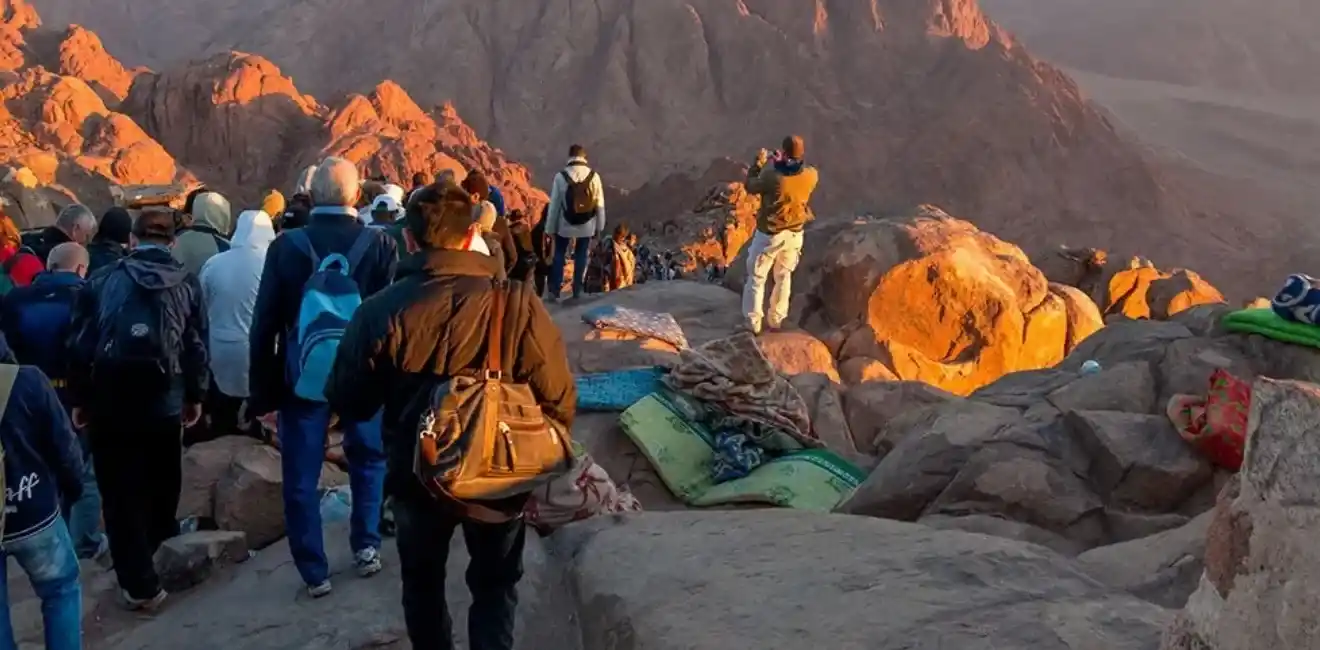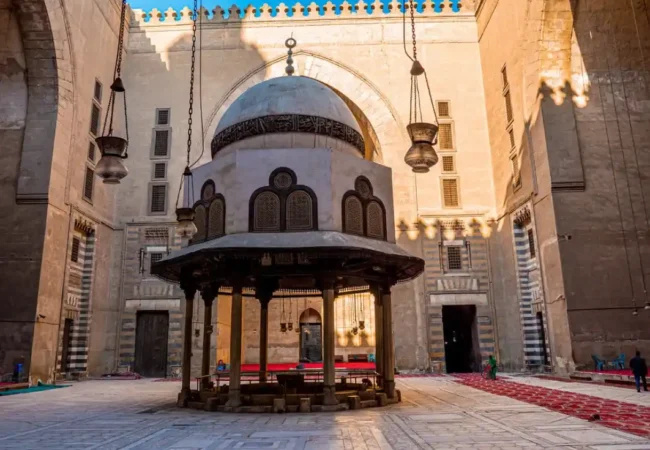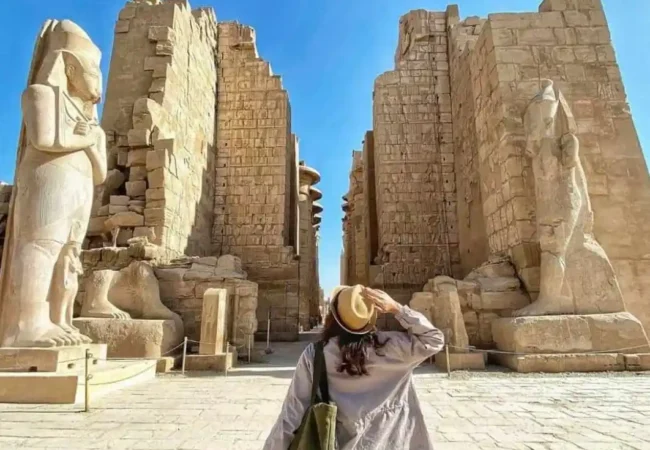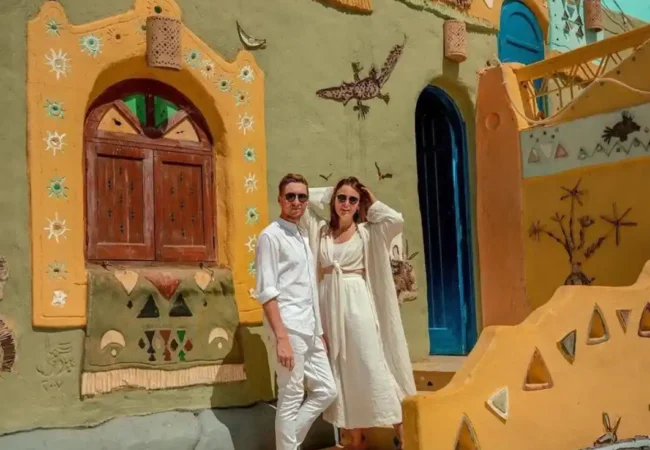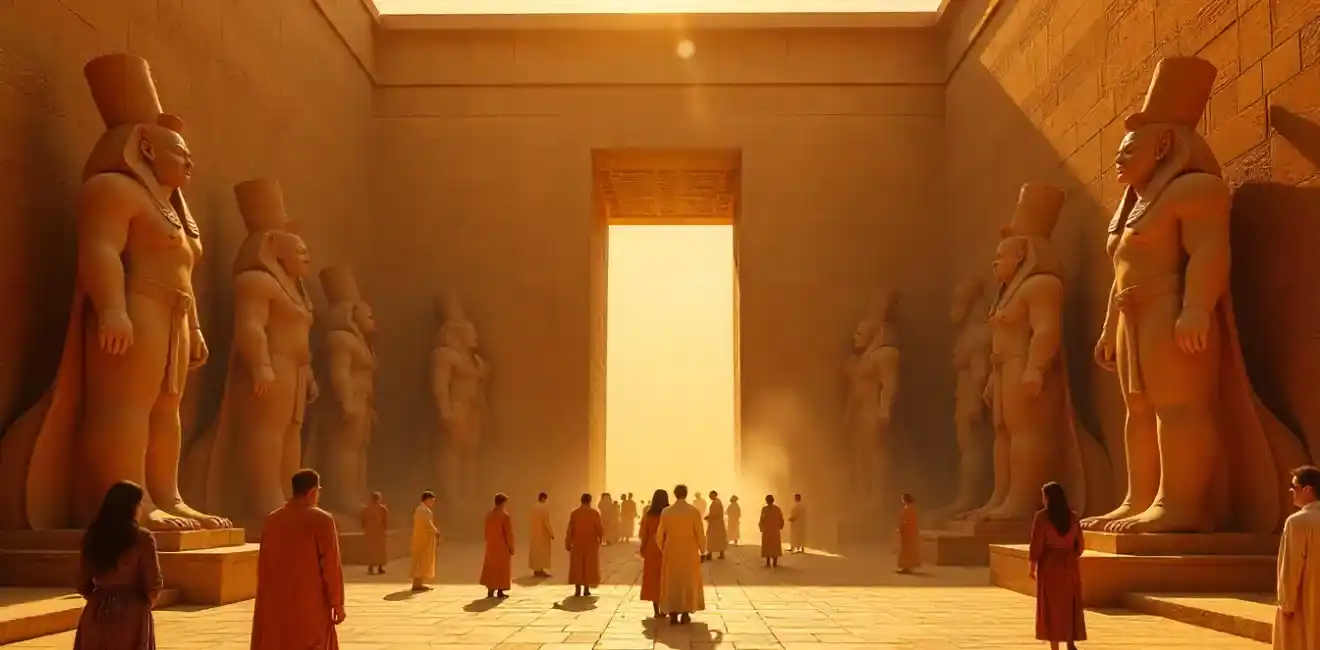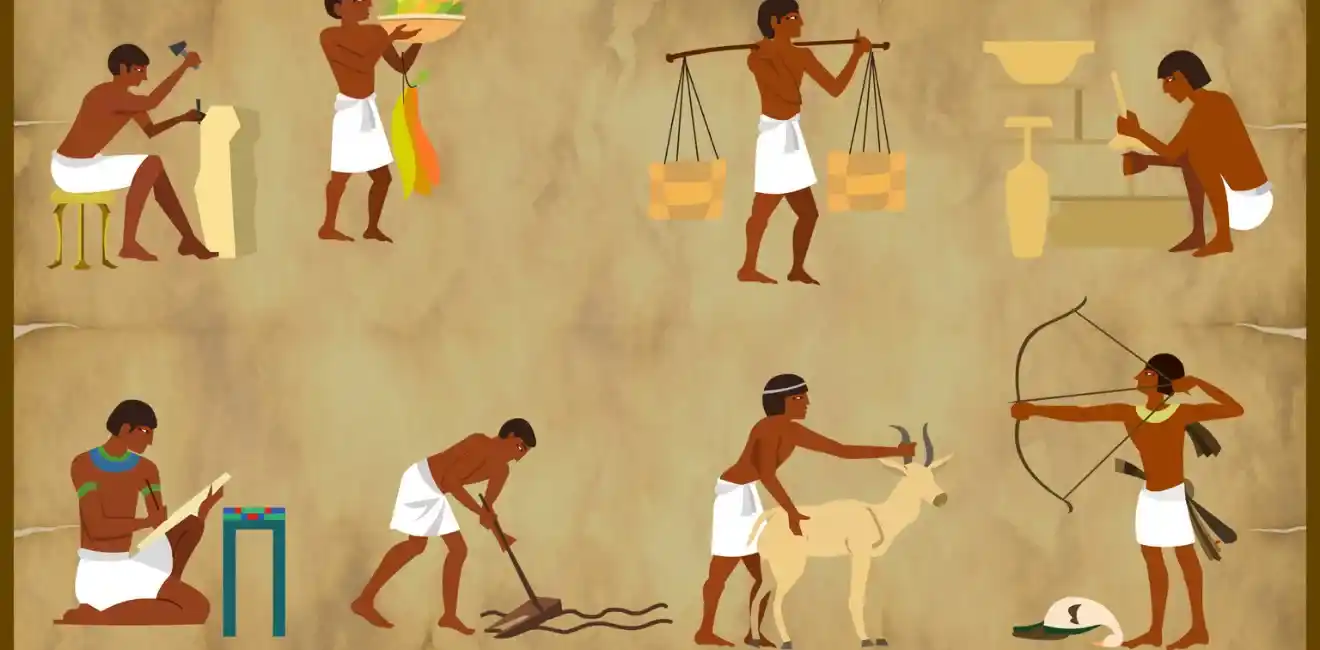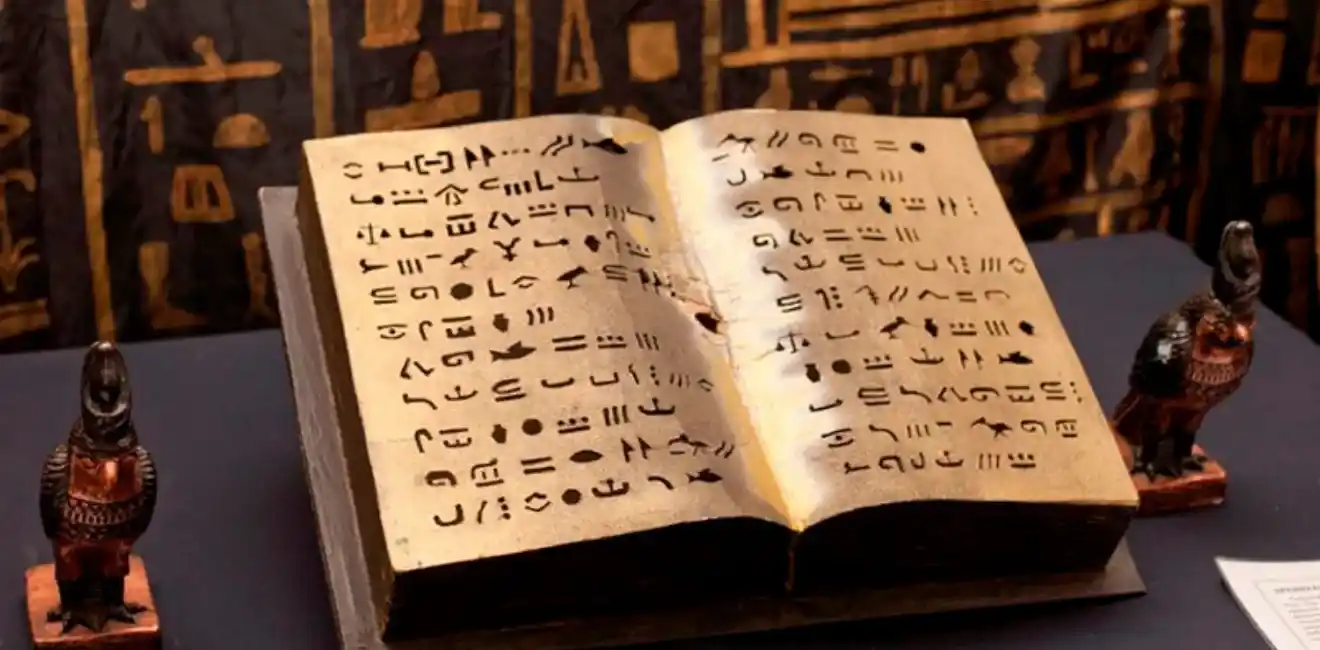
Queen Neferu
The rule of the great pharaohs extended for thousands of years in ancient Egypt, led by powerful kings and queens who left behind priceless architectural, artistic and cultural treasures.
Among the most important queens who had a significant presence in a pivotal era and indirectly influenced Egyptian civilization was Queen Neferu II, who is considered one of the queens or royal wives of the Eleventh Dynasty.
She did not rule Egypt directly, nor was she an official co-regent, although she was the wife of the important King Mentuhotep II.
She was buried in the Theban necropolis in the Deir el-Bahri area.
From here, in this article, we will embark on an imaginative or touristic journey to the remains of her tomb to explore the secrets of the ancient past and the treasures of Egyptian civilization.
Queen Neferu was the daughter of King Intef III and the wife of King Mentuhotep II.
She is considered a member of the royal family in the Eleventh Dynasty.
It is believed that she was born in the 21st century BC and was titled “Beloved King’s Wife” and “King’s Daughter.”
It is said that her mother was named “Yah,” according to the remaining inscriptions in the tomb located at Deir el-Bahri.
Neferu was the principal and perhaps most important wife of King Mentuhotep II during the early period of his reign.
His reign period is noted for its importance and strength, as he reunified Egypt after a period of turmoil and ushered Egypt into the prosperous Middle Kingdom era.
Prominent artistic features inside Neferu’s tomb
Neferu’s tomb is located in the Theban necropolis area at Deir el-Bahri which is opposite the modern city of Luxor.
Upon attempting to enter it, you will find that it is heavily damaged and largely destroyed, but some parts still retain artifacts, inscriptions, statues and relics.
Upon entry, you find that it consists of the remains of a front chapel which has foundations of limestone paved platforms. Part of the chapel was carved into the Theban mountain rocks.
There was a relatively long passage leading to the rock-cut burial chamber which contains the remains of the queen’s sandstone sarcophagus.
This passage is now practically located behind part of Queen Hatshepsut’s Deir el-Bahri temple.
Decorations and inscriptions inside Neferu’s tomb
Upon reaching the remains of the tomb, you will see that it is in poor and dilapidated condition. However, the inner burial chamber has largely remained intact, preserving all its inscriptions and decorations.
It contains a large collection of decorated stone fragments that once adorned the walls of the tomb’s chapel.
You find some inscriptions that refer to rituals and activities from the queen’s daily life, such as a famous scene depicting her sitting before her hairdresser.
It is also likely considered part of the rituals honoring the goddess Hathor, lady of beauty.
You will see other artifacts, now moved to museums which show King Mentuhotep II and Neferu II together in various scenes.
Some prominent colored reliefs indicating burial and mourning ceremonies and rituals and funerary texts aimed at assisting the queen in the afterlife, were also inscribed on the remaining walls.
The relationship between Neferu’s tomb and Hatshepsut’s temple
The tomb of Queen Neferu II and the tomb and temple of Queen Hatshepsut are located in approximately the same place in the rocky basin of the Deir el-Bahri area on the west bank of the Nile River.
Queen Neferu’s tomb originally exists within the mortuary temple complex of her father-in-law, King Mentuhotep II.
Specifically, it was dug beneath the site where Queen Hatshepsut’s temple was later built.
It subsequently became partially covered by the site of Hatshepsut’s large mortuary temple.
Hatshepsut’s temple covered part of the previous ruins and demolition remnants of the tomb or its annexes.
However, an open entrance was later dedicated, leading directly to Queen Neferu’s tomb from the courtyard of Queen Hatshepsut’s temple.
The importance of Neferu’s tomb in cultural tourism
Queen Neferu II’s tomb holds significant historical and archaeological importance in the field of cultural tourism due to its location in one of Luxor’s most important tourist landmarks, Deir el-Bahri, especially its association with the complex of King Mentuhotep II, the unifier of the Two Lands and founder of the Middle Kingdom.
This provides insight into the role of royal women in an important historical era characterized by strength and reunification.
Furthermore, the inscriptions or artifacts found in her tomb and those moved to museums add valuable information about her titles, potential responsibilities, status in the royal palace, royal life rituals and daily life.
To document its status and touristic importance, it is preferable to include it in any tourist program to the Deir el-Bahri area, as it tells about the Middle Kingdom era and the Deir el-Bahri region specifically.
Artifacts related to Neferu in world museums
Some major museums around the world contain important artifacts that were moved from Queen Neferu II’s tomb, primarily consisting of:
- The Egyptian Museum in Cairo holds some funerary stelae, statues and small artifacts discovered in the tomb.
- The Metropolitan Museum of Art in New York houses a large collection of colored relief drawings on limestone blocks from Neferu’s tomb chapel, showing her interacting with her hairdresser and servants. It also includes some funerary furniture or tools and wooden coffins for her servants, one of which contains a small statue of a woman wrapped in linen.
- The Brooklyn Museum in New York holds another piece of limestone rock relief referring to Queen Neferu, depicting her having her hair styled with the help of her maidservant.
- The Museum of Fine Arts in Boston most likely holds a shabti statue of the queen along with a small coffin belonging to her or one of her court members.
Tourist activities near Queen Neferu’s tomb site
There are numerous and varied tourist activities and other sites near Queen Neferu’s tomb site.
Among them, of course, is the famous mortuary temple of Hatshepsut which is very close, as Neferu’s tomb lies directly beneath it at Deir el-Bahri.
Also nearby is the vast archaeological area of the Theban necropolis, where many kings, queens and nobles of the New Kingdom were buried.
You can also visit the massive Karnak Temple which is an important part of the ancient city of Thebes, the beautiful Luxor Temple on the Nile corniche and the Valley of the Kings and the Valley of the Queens which contain dozens of tombs of pharaohs, their wives, children and nobles.
Visitors can see the tombs decorated with magnificent drawings and paintings which show us details of ancient daily life and funerary beliefs.
We should not forget the towering Colossi of Memnon, located at the entrance to West Thebes.
The two statues are remnants of a huge ancient mortuary temple of King Amenhotep III.
You can also enjoy felucca or Nile boat tours in Luxor to see other historical archaeological and natural landmarks and enjoy the stunning sunset views over the Nile.
Tips for visiting Queen Neferu tomb site
There are some general tips and instructions for visiting Queen Neferu’s tomb site within the Deir el-Bahri area and exploring this important historical monument.
Among the most important tips are:
- You should check the official opening hours of the archaeological area and its accessibility to the public beforehand, as well as the visiting and photography rules and regulations.
- It is preferable to visit open areas like Deir el-Bahri early in the morning or just before sunset after noon. This is the best time to avoid the intense heat of the strong sun.
- Take sunscreen, a hat and sunglasses with you as they are necessary items for protection from the heat and direct sunlight.
- Drink enough water regularly to maintain body hydration in this intense heat and dry climate.
- Strictly maintain the cleanliness of the site and do not write or carve on the walls of the tomb or temple, tamper with, or touch the artifacts.
- Adhere to the photography rules, as there may be warnings or restrictions against taking photos with flash which negatively affects the fragile inscriptions and their colors.
- Purchase the required tickets in advance or from the ticket office to be allowed entry into the Deir el-Bahri complex and the tombs or temples available for visiting within it.
FAQs
What time period did Queen Neferu live in?
The time period in which Queen Neferu lived is estimated to be around 2000 BC, during the Middle Kingdom era.
Where is Queen Neferu’s tomb located, and how can it be accessed?
The tomb is located in the Theban necropolis at Deir el-Bahri, very close to and beneath the famous Temple of Hatshepsut. It can be easily reached as part of a visit to the Deir el-Bahri tourist area.
Can Neferu tomb be visited as part of Luxor sightseeing tours?
Yes, theoretically, the entrance or what remains of Queen Neferu’s tomb can be visited if you are on a tourist tour to Luxor that includes Deir el-Bahri, because the tomb is located in Deir el-Bahri opposite the city of Luxor on the west bank of the Nile River.
(You should confirm its actual availability for visiting at the time of your visit).
What was Queen Neferu role in ancient Egyptian history?
Queen Neferu was not an actual ruler nor an official co-regent, but she was the ideal and beloved royal wife.
She did not have a major, direct and known influential role in the affairs of ancient Egypt like some other powerful queens. However, she was the principal wife of King Mentuhotep II, whose era marked the beginning of stability and prosperity in the Middle Kingdom.

